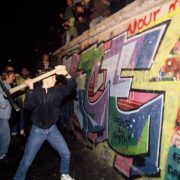The Berlin Wall was torn down 30 years ago. The seismic event sent shock waves across Europe and sparked hopes for millions of East Germans.
The Berlin Wall was erected on 13 August 1961. Made of barbed wire and concrete, the wall divided East and West Berlin for 28 years. The fall of the wall also triggered a series of events that led to the reunion of the Federal Republic of Germany and the German Democratic Republic.
The Berlin Wall was actually two walls, surrounding West Berlin and separated by a “death strip.” As its name implies, East Germans who tried to escape would be summarily shot by GDR border guards. Estimates vary, but well over 300 people are believed to have been killed trying to escape East Germany.
Berlin Today
About 200 events have been held over the last week in Berlin alone.
Under the slogan “7 Days – 7 Locations,” lectures, art installations, talks from witnesses, films and exhibitions have been held at the original Berlin locations of the revolution.
Berlin’s historic Brandenburg Gate has been the setting for an art installation featuring around 30,000 ribbons with people’s wishes, hopes, and memories, combined into a 150-meter long “freedom cloud.”
To mark the actual day when the wall fell, German President Frank-Walter Steinmeier and Chancellor Angela Merkel are expected to attend a commemoration at the Berlin Wall Memorial on Saturday.
Under its musical director Daniel Barenboim, the Staatskapelle Orchestra is to perform Beethoven’s fifth symphony – also known as the Schicksals-Sinfonie or destiny symphony – at the Brandenburg Gate.
A divided Germany
After World War II, Germany was divided between East and West. The West, with the help of the US and Britain, flourished and modernized. The East, under the influence of the Soviet Union, struggled. About 3.6 million East Germans, 20% of the population, fled between 1945 and 1961.
East Germany, known as the German Democratic Republic (GDR) or Deutsche Demokratische Republik (DDR), didn’t want the rest of its citizens to leave for the richer West, so in August 1961 it built barriers to keep its people in. The official GDR line: It wanted to keep “decadent, immoral westerners out.”
Trying to climb over the barriers would set off machine guns, mines, and other horrors. Soldiers patrolled a no-man’s land along the border.
About 150,000 people attempted to escape during the 28 years that the East German barrier existed. An estimated 40,000 succeeded.
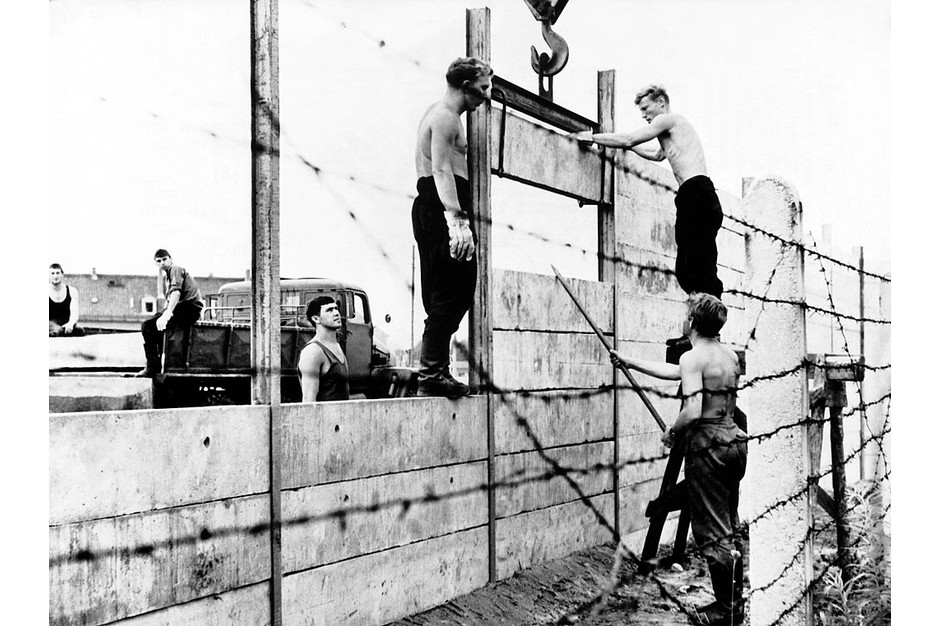
On August 13th 1961, building commandos of the National People’s Army of the German Democratic Republic started the erection of the 3.50 mtrs high wall (Photo by Keystone-France/Gamma-Keystone via Getty Images)
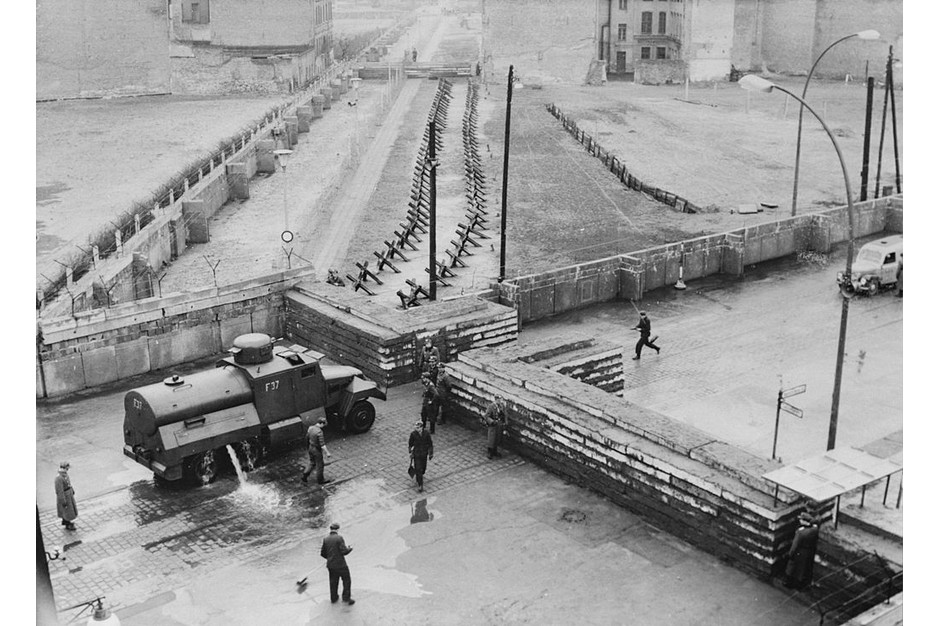
An armoured water truck cleans the street of debris after the East German government ordered construction work to strengthen the border crossing at Heinrich-Heine-Strasse (aka Checkpoint Delta) on the Berlin Wall, Berlin, Germany, 4th December 1961. (Photo by Keystone/Hulton Archive/Getty Images)
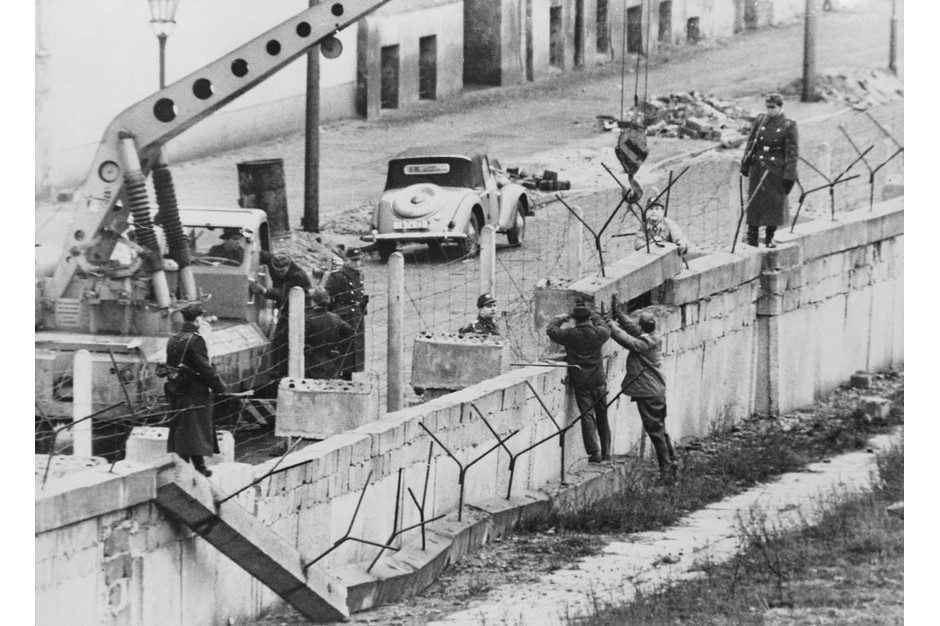
Members of the East German Volkspolizei repairing a section of the Berlin Wall after it was damaged in bad weather, Boysenstrasse, Berlin, Germany, 13th January 1962. (Photo by Keystone/Hulton Archive/Getty Images)
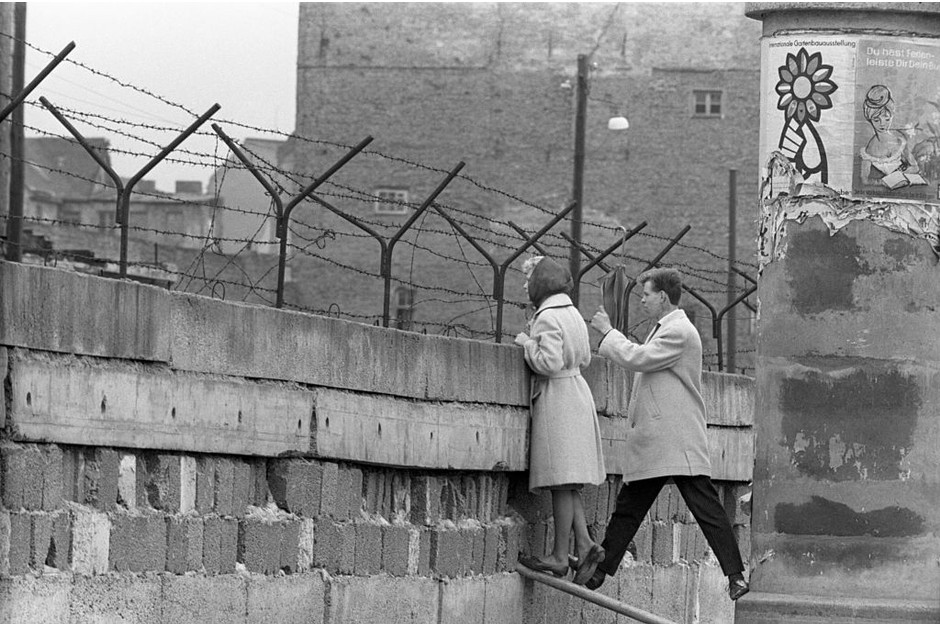
A young woman, accompanied by her boyfriend, stands precariously near the top of the Berlin War to talk to her mother on the East Berlin side.
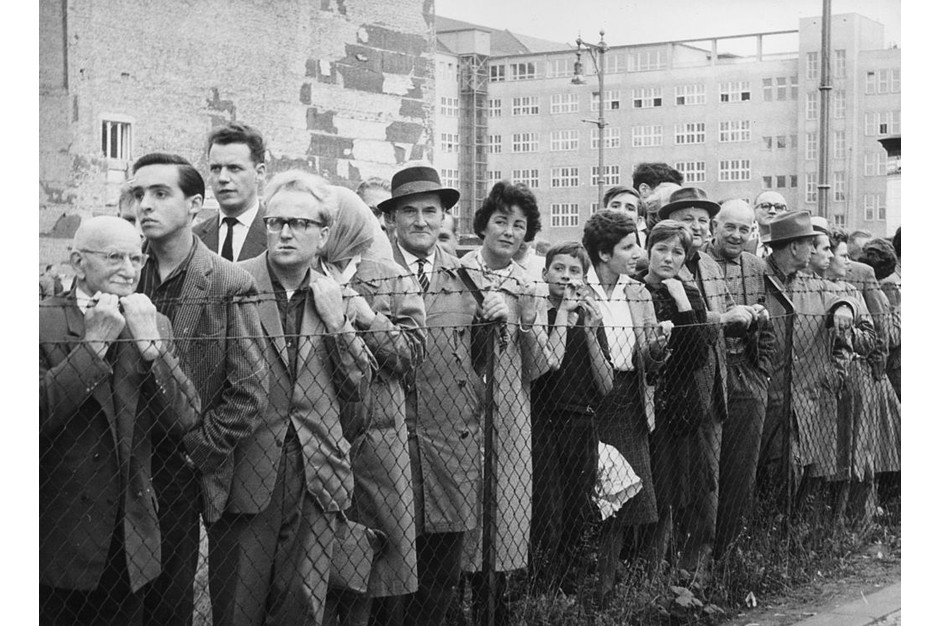
On a day when the Berlin Wall is open, throngs of West Germans wait for friends and relatives to arrive from the Eastern sector. (Photo by Three Lions/Getty Images)
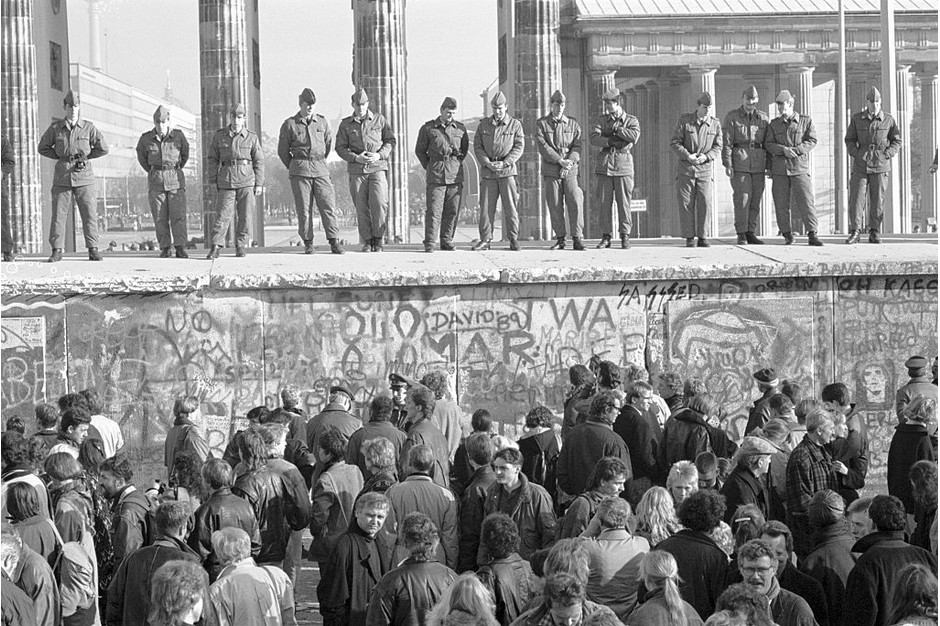
Border Guards Standing on Berlin Wall (Photo by David Turnley/Corbis/VCG via Getty Images)
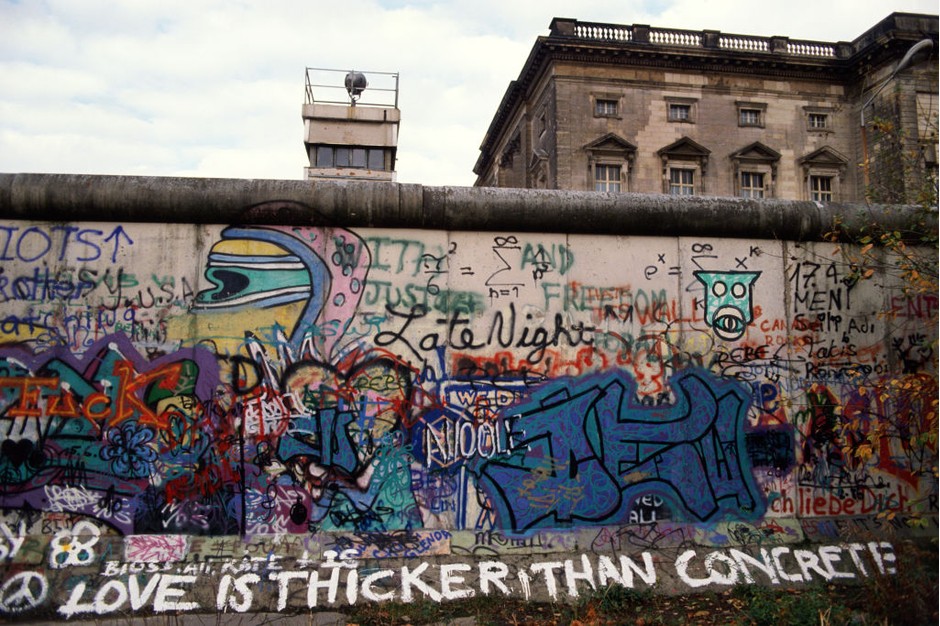
Germany, Berlin 1989
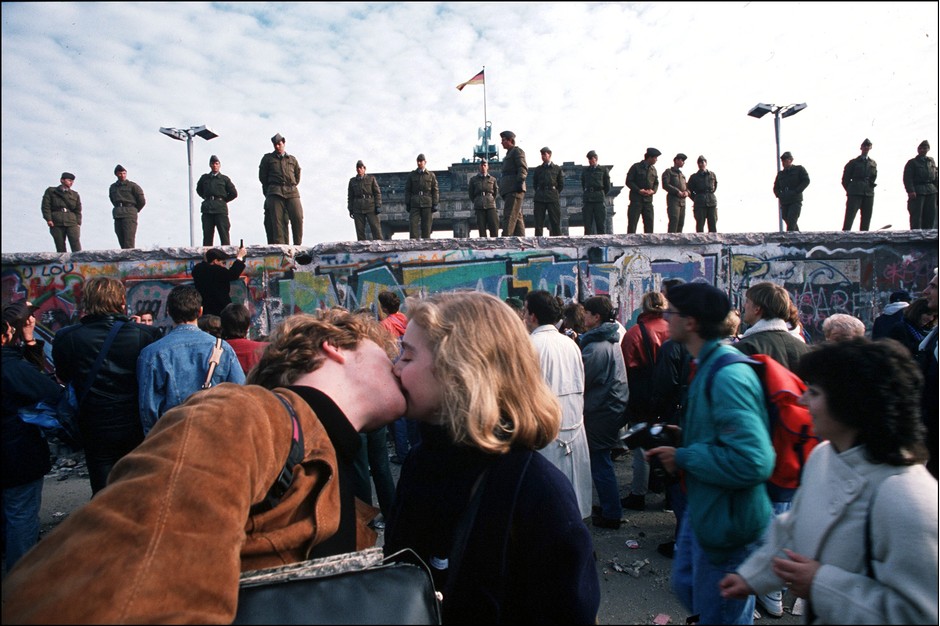
November 11: The Berlin Wall opening in Berlin, Germany on November, 1989. (Photo by Patrick PIEL/Gamma-Rapho via Getty Images)
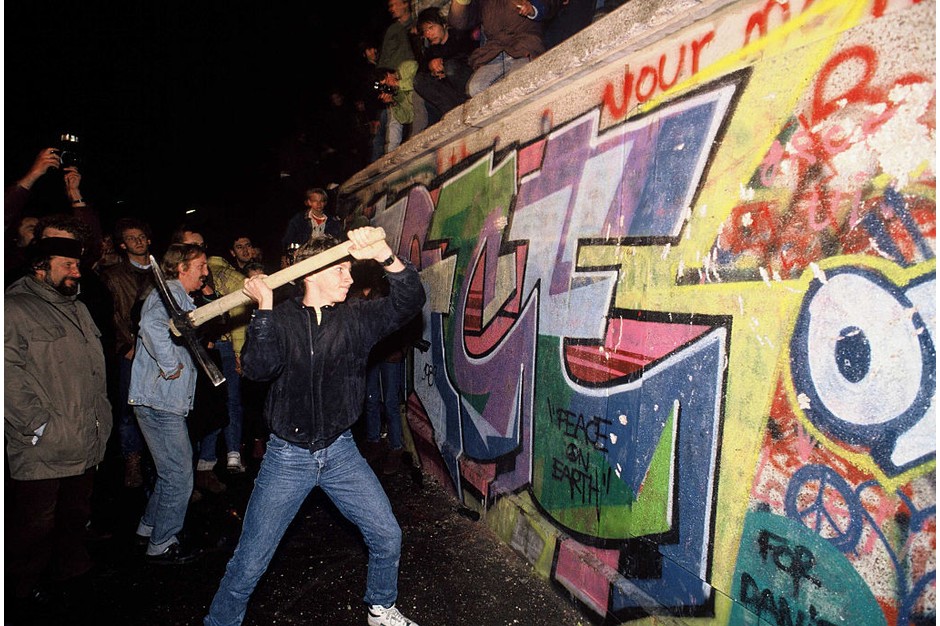
A man attacks the Berlin Wall with a pickaxe on the night of November 9th, 1989 as news spread rapidly that the East German Government would now start granting exit visas to anyone who wanted to go to the West. (Photo by robert wallis/Corbis via Getty Images)
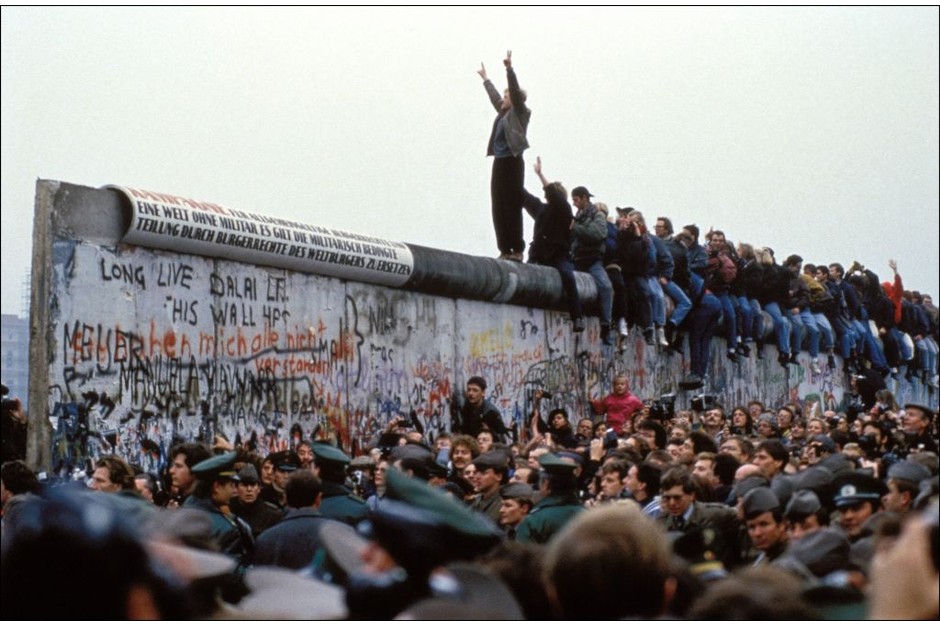
November 12: A man celebrates on the Berlin wall on November 12, 1989 in Berlin, Germany. (Photo by Pool CHUTE DU MUR BERLIN/Gamma-Rapho via Getty Images)
Support Prague Morning!
We are proud to provide our readers from around the world with independent, and unbiased news for free.
Our dedicated team supports the local community, foreign residents and visitors of all nationalities through our website, social media and newsletter.
We appreciate that not everyone can afford to pay for our services but if you are able to, we ask you to support Prague Morning by making a contribution – no matter how small 🙂 .



